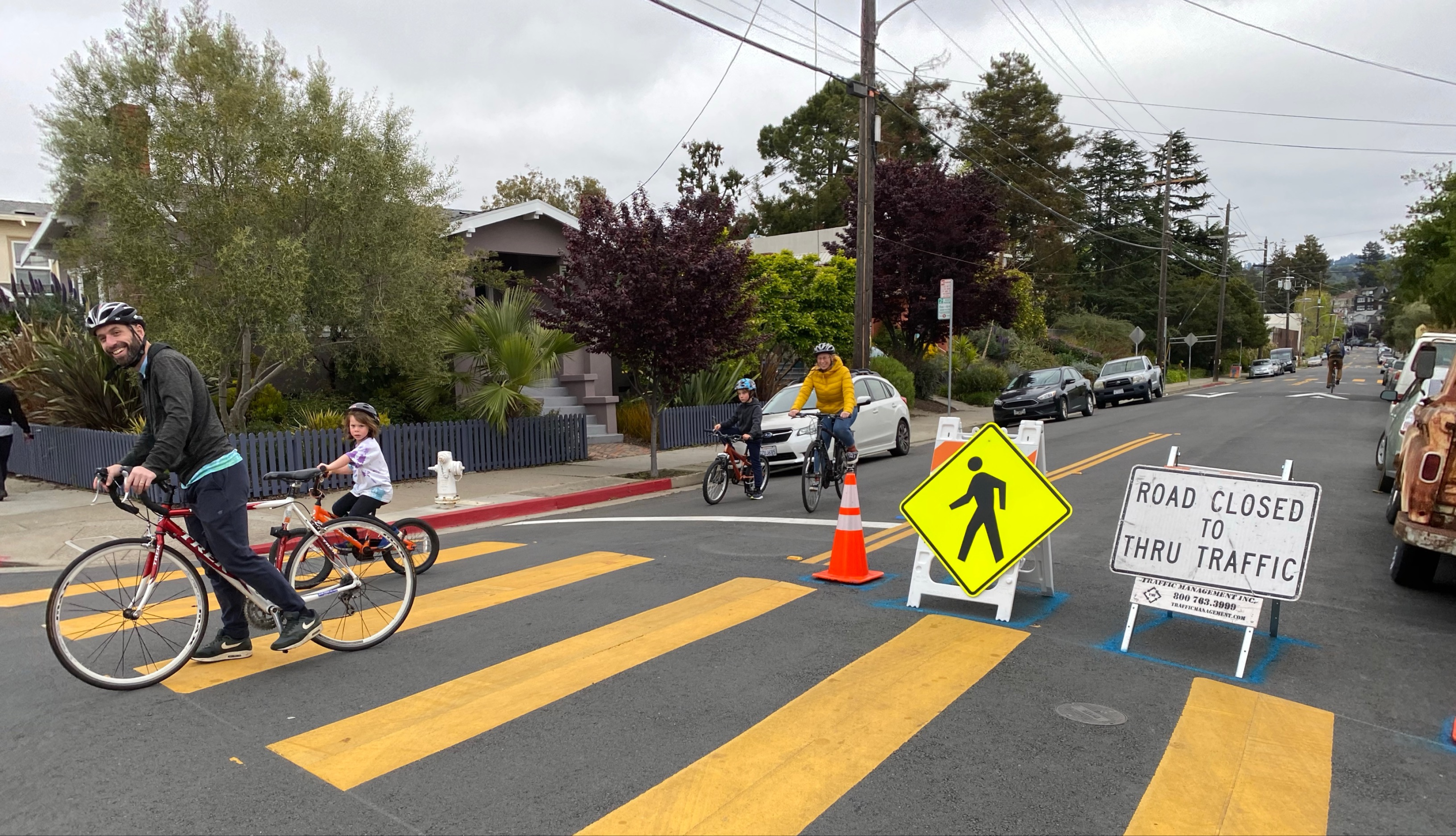Oakland’s Slow Streets program closed residential streets to through car traffic starting in April 2020, and opened them to all people walking and rolling (see our previous coverage here). Originally planned as a 74 mile network, at its peak the program covered 21 miles across town. This included some well used segments lovingly decorated by neighbors, but also some areas with less activity and success.
A year ago this program was ended with short notice, citing staff capacity limitations to adequately plan & maintain it. Ever since then we’ve been working with the Oakland Department of Transportation (OakDOT) to bring Slow Streets back more sustainably, and we are very excited to share this announcement by the city about the planned return of this program: www.oaklandca.gov/projects/oakland-slow-streets.
Even before the pandemic, since early 2020, we had been coordinating with staff on a plan to enhance the minimum design standards for Oakland’s Neighborhood Bike Routes (NBRs) with consistent traffic calming on every block and at each intersection of these proposed routes citywide, which culminated in this 2021 design guide. Now, these facilities are proposed to all be incorporated into the Slow Streets network for even further upgrades.
 Thanks to the 75 percent of Oaklanders who voted to pass Measure U, a massive amount of repaving is on the way, including 50 miles of existing or proposed Neighborhood Bike Routes. As the paving is implemented these corridors will all receive Slow Streets treatments over the next 5 years.
Thanks to the 75 percent of Oaklanders who voted to pass Measure U, a massive amount of repaving is on the way, including 50 miles of existing or proposed Neighborhood Bike Routes. As the paving is implemented these corridors will all receive Slow Streets treatments over the next 5 years.
A presentation with concepts about what these Slow Streets designs should entail is available here, including reduced speed limits, traffic calming, custom signage & markings, and more. Some design features will be implemented on every segment with a basic notification/input process. Others features like car diverters can be included but will trigger a more in-depth study & outreach process, looking at the full neighborhood to also address impacts on side streets.

 Oakland’s 2023 paving work will kick off soon, including several of these proposed Slow Street corridors. So we encourage everyone to visit the project site, check out the presentation materials, and send any questions or comments to oakdotbikeped@oaklandca.gov.
Oakland’s 2023 paving work will kick off soon, including several of these proposed Slow Street corridors. So we encourage everyone to visit the project site, check out the presentation materials, and send any questions or comments to oakdotbikeped@oaklandca.gov.
I want a Slow Street in my Oakland neighborhood, what do I do?
Nothing yet. OakDOT staff are still in the process of figuring out how this will all work with regard to communications and construction, and how they will be able to do it efficiently to stay ahead of the 5-year paving plan schedule. You can check out Oakland’s paving plan here to see which streets are included and during what year the paving is proposed to occur. If your street is not on the paving map, then additional Slow Streets requests will likely be accepted during a future update of the city’s Capital Improvement Program (CIP).
I’m not in Oakland and I want a Slow Street in my neighborhood, what do I do?
Contact your local elected officials and city staff and let them know, and share this post and the linked presentation and design guide files. These plans and design standards we are helping to develop in Oakland are available to anyone and should be replicable elsewhere, so the work being done now makes it even easier for other cities to say “yes” next. If we can help answer any questions, send us an email at advocacy@BikeEastBay.org.
This post originally appeared on Bike East Bay’s web page and is published here with permission.





